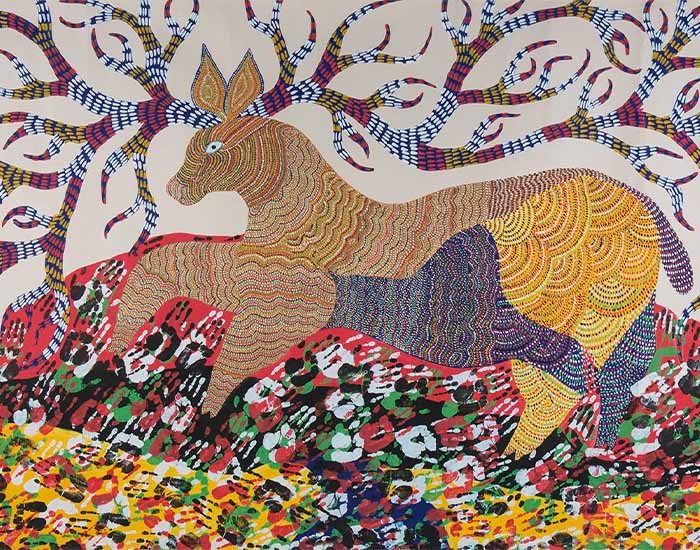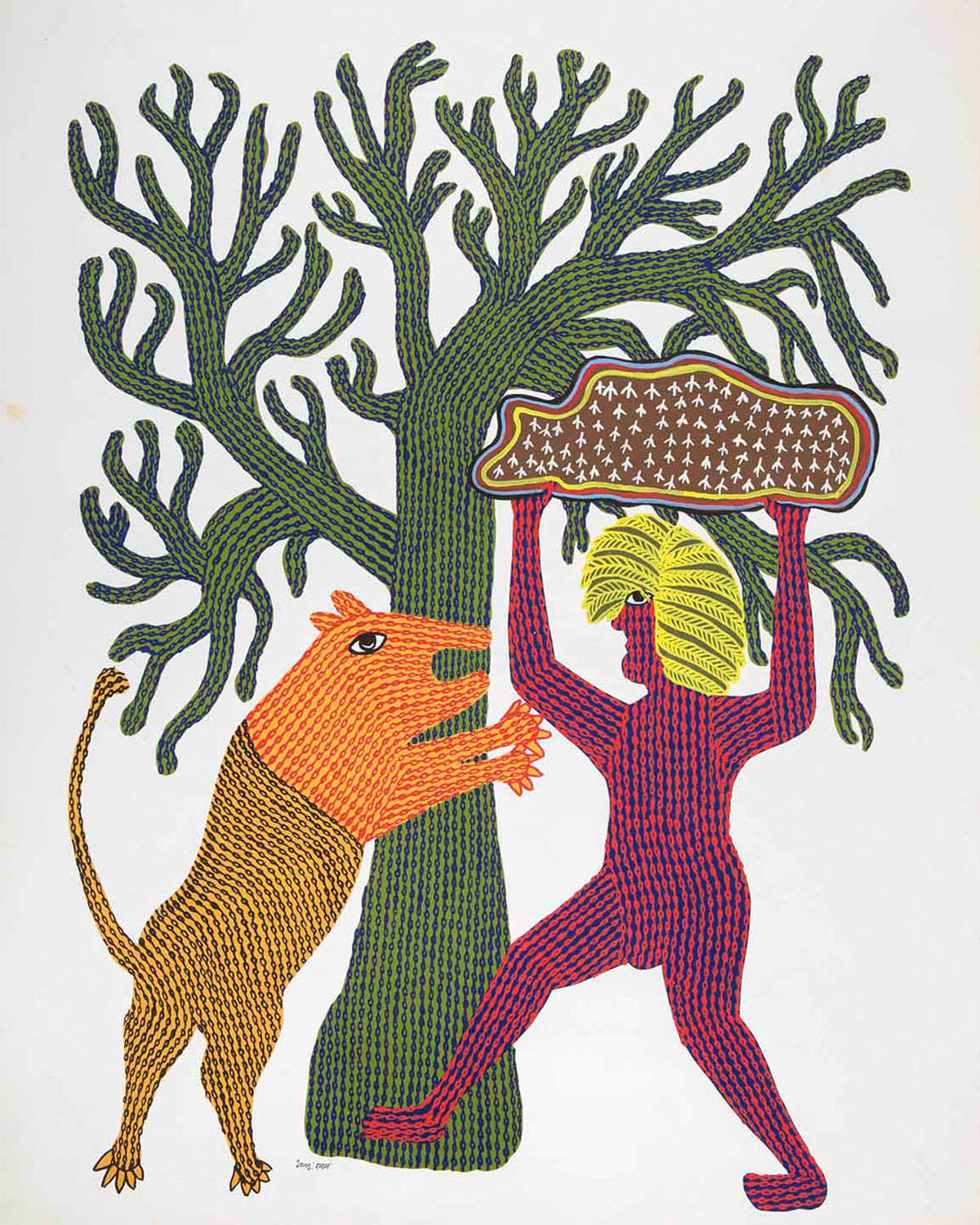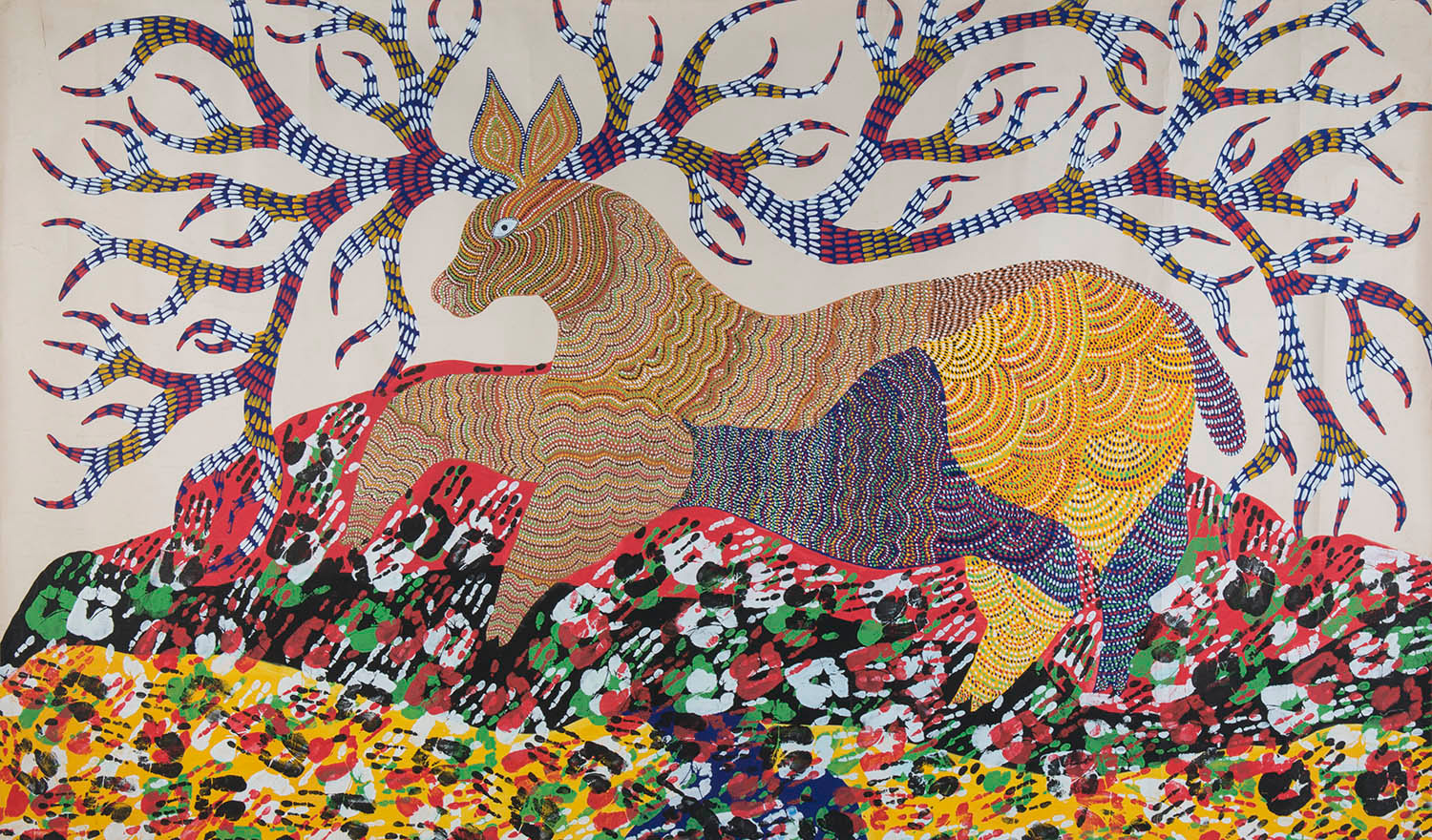
A painting tradition found within the larger Gond community, Gond Painting is practiced by the a subgroup known as the Pardhan. Historically, the Gonds resided primarily in Madhya Pradesh, as well as parts of Odisha, Jharkhand, Bihar and Chhattisgarh. The Pardhans were travelling bards and performers who recited stories of Gond heritage and mythology. They traditionally painted murals on the mud walls of homes and floors on festive occasions, although the rising prominence of several contemporary Pardhan artists since the 1980s has brought many elements of Gond art to paper and canvas.
Gond or Pardhan painting typically involves larger geometric forms subdivided into patterns made of dots and dashes. The interconnectedness of the natural environment, especially within forests near Gond villages, is a recurring theme in the art and mythology of the community.
As mural art, Gond painting uses natural pigments and materials. The walls and floor are cleaned and covered in a white clay called chhui, which is also used as a white pigment for painting. The brushes, called koochi, are made with fibre obtained from tree bark, and sharpened twigs are used to paint the thinnest lines. Red and orange pigments are made with geru soil found in central and southern India, black is made with coal, green with cow dung and yellow with an ochre clay called ramraj or pili mitti. These paintings are usually temporary and made during festivals or other social events.
Jangarh Singh Shyam, a twentieth-century Pardhan artist, is credited with giving Gond art a contemporary character with his unique style, now known as Jangarh Kalam. For most of Shyam’s career, Gond art was often conflated with Jangarh Kalam due to the assumptions of early observers, who mistook Shyam’s own style to be representative of traditional Gond painting. Jangarh Kalam is highly figurative, with a focus on images of the flora and fauna found in Gond mythology, such as peacocks, tigers, snakes and birds, and deities like Phulvari Devi and Marahi Devi.
As it draws heavily from Gond mythology, folk stories and the geometric style of Pardhan painting, and as it is practiced primarily by Pardhan artisans as an inherited practice, Jangarh Kalam is now regarded by some scholars as contemporary Gond painting, with an awareness of the difference between the historic mural art tradition and the style inspired by Shyam.
First Published: April 21, 2022
Last Updated: July 26, 2023




